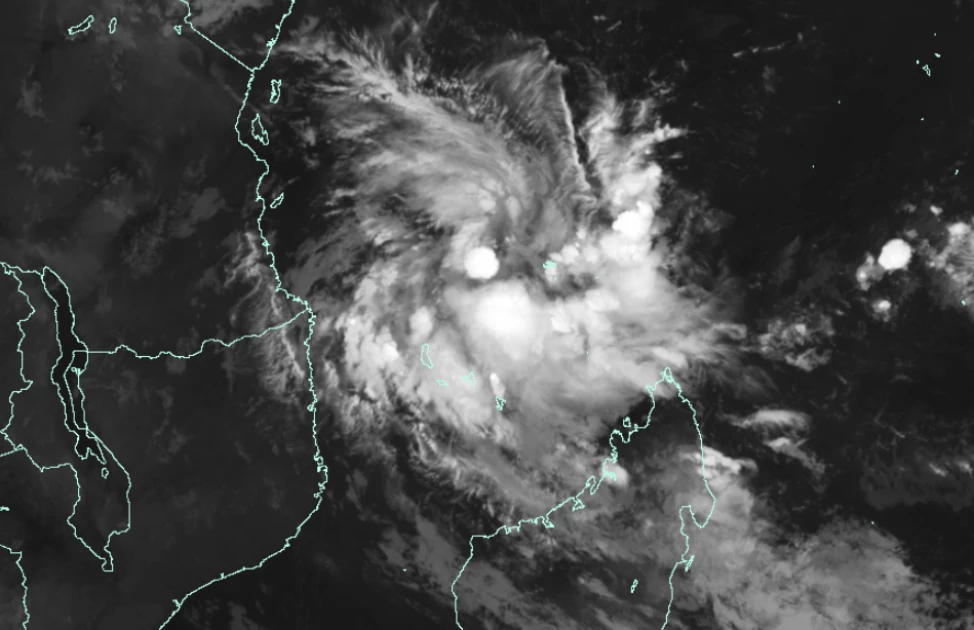Cyclone Hidaya: Kenya to be spared full wrath thanks to the Equator

A tracker of the Tropical Cyclone Hidaya. PHOTO | X: Met Office Storms
The Kenya Meteorological Department now says that Kenya will feel the effects of the cyclone but it will be "from the fringes."
"Indeed, we will feel the effects from the fringes of the tropical cyclone, but it will weaken to become a depression. The eye of the cyclone will make landfall just about or below 5°S from the equator," said the meteorological department.
This was revealed as the department was responding to questions stemming from a five-year statement they made when another cyclone, Kenneth, was headed our way.
As Cyclone Hidaya prepares to make landfall on the Kenyan coast, the Meteorological Department was forced to explain a statement they tweeted five years ago declaring that "Cyclones cannot come this close to the equator."
Curious Kenyans who unearthed the Apr 25, 2019 tweet have been asking the Met Department what changed as Cyclone Hidaya ravages Tanzania and is expected to hit the Kenyan coast this weekend.
In 2019, there were fears that Tropical Cyclone Kenneth, which had wreaked havoc in Mozambique, the Comoro Islands and Tanzania was on a straight path to the Kenyan coast.
The Meteorological Department announced through their social media channels in 2019; "It is FALSE that cyclone Kenneth will hit the Kenyan Coast. By the laws of physics, Cyclones cannot come this close to the equator. Landfall will be northern Mozambique as shown in the satellite image. However, we may experience the effects of the cyclone in the form of enhanced rainfall over parts of Isiolo, Western Kenya, Samburu and including Nairobi. Stay with us for updates as the cyclone evolves."
But with Cyclone Hidaya forcing the government to issue a warning on Thursday and even banning beach activities to avert loss of lives, many are wondering what changed and why the cyclone has come this close to the Equator.
"So how come Hidaya is hitting us this time around?" asked X user Anna Konuche.
The Met Department replied: The physics laws governing cyclone formation remain unchanged. Indeed, we will feel the effects from the fringes of the tropical cyclone, but it will weaken to become a depression. The eye of the cyclone will make landfall just about or below 5°S from the equator.
The reason why Cyclones, typhoons and hurricanes depending on location, do not cross the equator is because of the Coriolis force or effect.
According to National Geographic, the Coriolis effect describes the pattern of deflection taken by objects not firmly connected to the ground as they travel long distances around Earth. The Coriolis effect is responsible for many large-scale weather patterns.
"The key to the Coriolis effect lies in Earth’s rotation. Specifically, Earth rotates faster at the Equator than it does at the poles. Earth is wider at the Equator, so to make a rotation in one 24-hour period, equatorial regions race nearly 1,600 kilometres per hour. Near the poles, Earth rotates at a sluggish 0.00008 kilometres per hour, reads a statement from their website.
Gary Barnes, a Professor of Meteorology at the University of Hawaii says; "The Coriolis force is what we call an apparent force - it handles the problem that the earth is spinning and thus a point on the globe is always changing direction or always accelerating."
While a cyclone may cross the equator, Barnes, writing on the School of Ocean & Earth Science website says; "In the Indian Ocean, some come closer to pulling off this trick. Why don't they cross? The variation in Coriolis with latitude - called the Beta effect - actually will move a hurricane to the NW in the northern hemisphere even if there is no large-scale wind pushing the storm along! So, Coriolis not only seems to be a necessary ingredient to make a storm, but it may also pull them away from the equator making the crossing event a tough one to pull off."
Want to send us a story? SMS to 25170 or WhatsApp 0743570000 or Submit on Citizen Digital or email wananchi@royalmedia.co.ke
Comments
No comments yet.


Leave a Comment